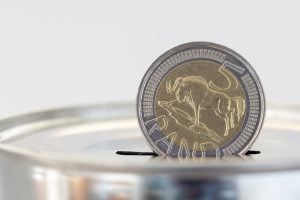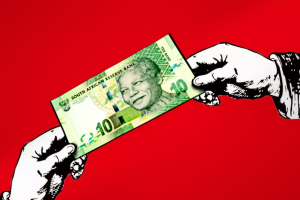The average wealth in South Africa vs the USA, Australia, UK and more

Allianz has released its 14th edition of its Global Wealth Report for 2023, revealing the average value of financial assets held by South African households and how it compares to 57 countries around the world.
Allianz is a global financial services company that provides commercial insurance in South Africa, putting the asset and debt situation of households across the globe under the microscope in its latest report.
The Allianz Global Wealth Report analyses gross financial assets held by households, i.e., cash and bank deposits, receivables from insurance companies and pension institutions, securities (shares, bonds and investment funds) and other receivables, and liabilities incurred by households.
It is based on data from 57 countries. This group of countries covers 91% of the global GDP and 72% of the global population. In 43 countries, Allianz had access to statistics from the macroeconomic financial accounts. In other countries, it was able to estimate the volume of total financial assets based on information from household surveys, bank statistics, statistics on assets held in equities and bonds and technical reserves.
According to the report, asset prices fell across the board last year. In the US, for example, stock prices fell by more than 18%, while the corresponding bond indices suffered setbacks of more than 10%.
In most other countries, the development looked similar as the turnaround in interest rates was more or less conducted by all countries – albeit at different speeds. This resulted in an “everything slump“ scenario, providing no protection for portfolios, said the report.
Overall, financial assets worth €6.6 trillion (R132.3 trillion) were lost, with total financial assets amounting to €233 trillion (R4.6 quadrillion) at the end of 2022.
Relative to economic activity (financial assets as a percentage of GDP), the collapse was even more dramatic – this ratio fell to 275%, after 311% in 2021, which was even lower than the value from 2016 (277%).
However, the report noted that GDP, which was inflated by high inflation, also played a major role.
The report showed that this environment left deep scars on the development of private households’ global financial assets, which declined by 2.7% in 2022, the strongest decline since the Global Financial Crisis (GFC) in 2008, and some countries fared better than others.
Ranking
Despite losing 2.3% more than the global average, the United States still ranks as the wealthiest country, with the average household holding €251,860 (R5.07 million) worth of assets as of the end of 2022.
Dropping from first place (2022) to second this year is Switzerland, with an average household asset value of €238,780 (R4.8 million), this is then followed by Denmark in third, with the average household holding €163,830 (R3.3 million) worth of assets.
Of the top 20 wealthiest countries by asset value per capita, only three recorded a positive year-on-year (YoY) percentage change. These were Singapore (+3.9%), Taiwan (+3.1%), and Malta (+0.6%), ranking fourth, fifth, and twentieth, respectively.
South Africa
The report showed that the gross financial assets of South African households increased by a modest 1.7% in 2022, way below the increase in the previous year (15.1%).
The slowdown was across the board: the asset class insurance/pension – with a portfolio share of 55%, the dominant asset class in South Africa – grew by a meagre 2.1% (2021: 14.2%), bank deposits slowed to 6.6% (8.6%) and securities even lost in value (-0.9% in 2022 against +20.1% in 2021).
Compared to the pre-pandemic year of 2019, financial assets are 22.3% higher – but only in nominal terms. Adjusted for inflation, the increase is reduced to a much more modest 5.9% in three years. Growth in liabilities accelerated to 7.3% in 2022, after 5.8% in 2021.
As a result, the debt-to-GDP ratio remained flat at 41%, 9% below its peak in 2007. Net financial assets per capita, finally, remained basically flat (+0.3%).
However, this positive year-on-year change might not tell the full story. When looking at the e ratio of the mean to the median, South Africa has the highest ratio at 11.4 – representing a strong distortion of the distribution in the higher wealth segments.
This means most of the gains where a result of the top 10% of income earners gaining in wealth compared to the rest of the country. This also resulted in the highest Gini coefficient of 0.87. A Gini coefficient of 0 reflects perfect equality, where all income or wealth values are the same, while a Gini coefficient of 1 (or 100%) reflects maximal inequality, showing a small group of South Africa’s population holds most of the wealth.
With net financial assets per capita of €9,000 (R181,340), South Africa dropped to 41st position in the ranking of the richest countries.
| Rank 23 | Rank 22 | Country | Asset value per capita (€) | YoY change |
|---|---|---|---|---|
| 1 | 2 | United States | €251 860 | -8.9% |
| 2 | 1 | Switzerland | €238 780 | -4.4% |
| 3 | 18 | Denmark | €163 830 | -9.9% |
| 4 | 11 | Singapore | €151 200 | +3.9% |
| 5 | 10 | Taiwan | €141 600 | +3.1% |
| 6 | 6 | New Zealand | €117 760 | -7.6% |
| 7 | 9 | Canada | €117 450 | -5.7% |
| 8 | 15 | Sweden | €116 060 | -13.2% |
| 9 | 7 | Netherlands | €103 120 | -18.1% |
| 10 | 3 | Belgium | €97 790 | -7.7% |
| 11 | 4 | Japan | €96 500 | -0.3% |
| 12 | 17 | Australia | €92 630 | -6.1% |
| 13 | 13 | Israel | €92 370 | -3.6% |
| 14 | 8 | UK | €88 380 | -9.2% |
| 15 | 16 | Ireland | €71 360 | -3.9% |
| 16 | 5 | Italy | €69 350 | -6.9% |
| 17 | 12 | France | €67 500 | -7.1% |
| 18 | 14 | Austria | €65 330 | -4.6% |
| 19 | 19 | Germany | €63 540 | -8.3% |
| 20 | 20 | Malta | €49 500 | +0.6% |
| 41 | 39 | South Africa | €9 000 | +0.3% |


















